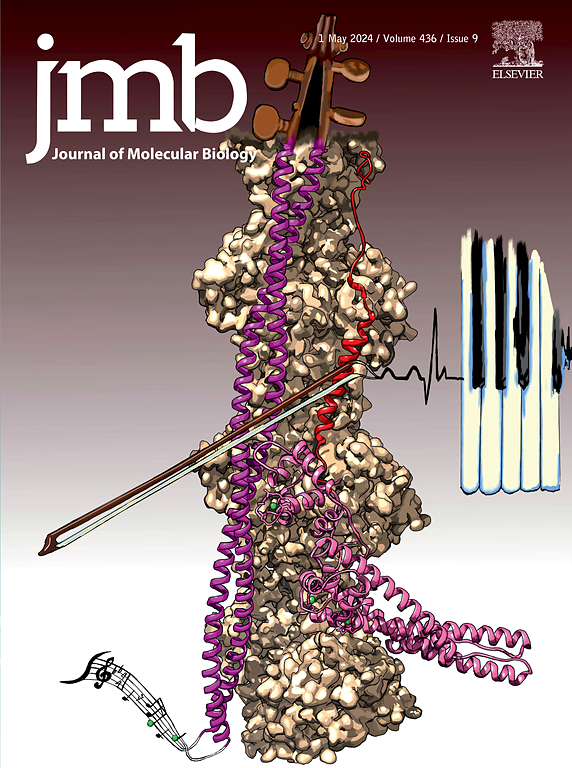Structure of the C-terminal of viral responsive protein 15 (VRP15): a key protein during white spot syndrome virus (WSSV) infection.
IF 4.7
2区 生物学
Q1 BIOCHEMISTRY & MOLECULAR BIOLOGY
引用次数: 0
Abstract
White spot syndrome virus (WSSV) is a major serious threat to black tiger shrimp farming. WSSV infection induces a host protein, viral responsive protein 15 (VRP15), for viral assembly and nuclear egress. Here, we showed that the C-terminal tail of VRP15 (VRP15-C) interacts directly with the viral nucleocapsid tegument protein WSV399. The crystal structure of VRP15-C was determined at 1.5Å. The structure showed that VRP15-C forms a dimer by forming an α-helix bundle structure and that the dimer further interacts with adjacent dimers to form a tetramer and a higher oligomer by intermolecular helix-helix interactions. The ability to form oligomeric forms may contribute to assembly of viral proteins to form a nucleocapsid of WSSV.
病毒应答蛋白15 (VRP15) c端结构:白斑综合征病毒(WSSV)感染过程中的关键蛋白
白斑综合征病毒(WSSV)是黑虎对虾养殖的主要威胁。WSSV感染诱导宿主蛋白VRP15 (virus responsive protein 15),用于病毒组装和核出口。在这里,我们发现VRP15的c端尾部(VRP15- c)直接与病毒核衣壳被膜蛋白WSV399相互作用。VRP15-C的晶体结构在1.5Å上测定。结构表明,VRP15-C通过形成α-螺旋束结构形成二聚体,二聚体进一步与相邻二聚体通过分子间螺旋-螺旋相互作用形成四聚体和高级低聚体。形成寡聚物形式的能力可能有助于病毒蛋白的组装,形成WSSV的核衣壳。
本文章由计算机程序翻译,如有差异,请以英文原文为准。
求助全文
约1分钟内获得全文
求助全文
来源期刊

Journal of Molecular Biology
生物-生化与分子生物学
CiteScore
11.30
自引率
1.80%
发文量
412
审稿时长
28 days
期刊介绍:
Journal of Molecular Biology (JMB) provides high quality, comprehensive and broad coverage in all areas of molecular biology. The journal publishes original scientific research papers that provide mechanistic and functional insights and report a significant advance to the field. The journal encourages the submission of multidisciplinary studies that use complementary experimental and computational approaches to address challenging biological questions.
Research areas include but are not limited to: Biomolecular interactions, signaling networks, systems biology; Cell cycle, cell growth, cell differentiation; Cell death, autophagy; Cell signaling and regulation; Chemical biology; Computational biology, in combination with experimental studies; DNA replication, repair, and recombination; Development, regenerative biology, mechanistic and functional studies of stem cells; Epigenetics, chromatin structure and function; Gene expression; Membrane processes, cell surface proteins and cell-cell interactions; Methodological advances, both experimental and theoretical, including databases; Microbiology, virology, and interactions with the host or environment; Microbiota mechanistic and functional studies; Nuclear organization; Post-translational modifications, proteomics; Processing and function of biologically important macromolecules and complexes; Molecular basis of disease; RNA processing, structure and functions of non-coding RNAs, transcription; Sorting, spatiotemporal organization, trafficking; Structural biology; Synthetic biology; Translation, protein folding, chaperones, protein degradation and quality control.
 求助内容:
求助内容: 应助结果提醒方式:
应助结果提醒方式:


